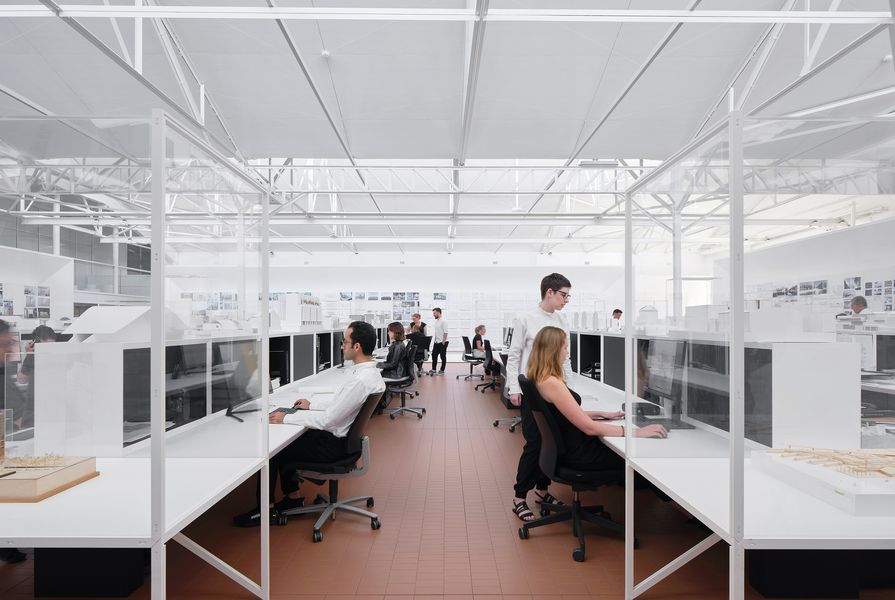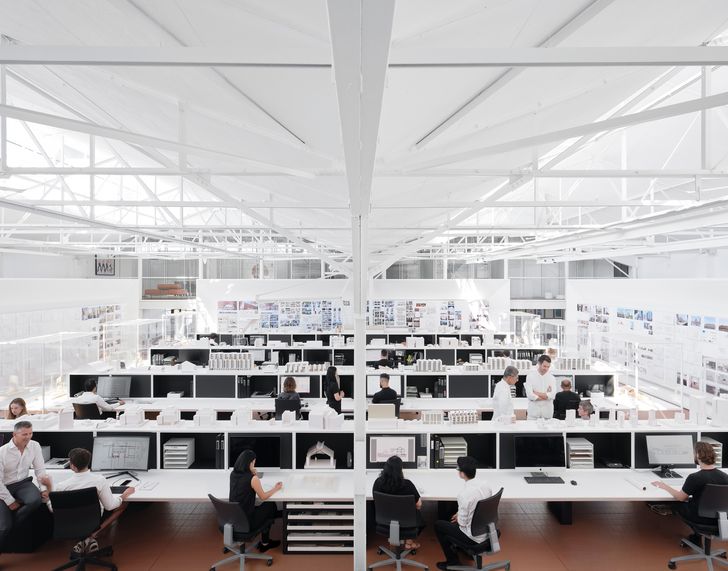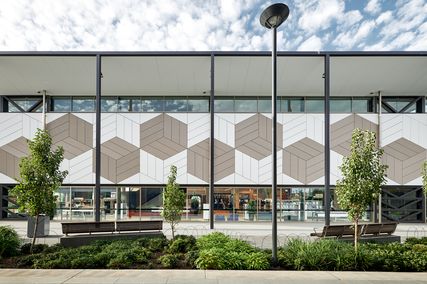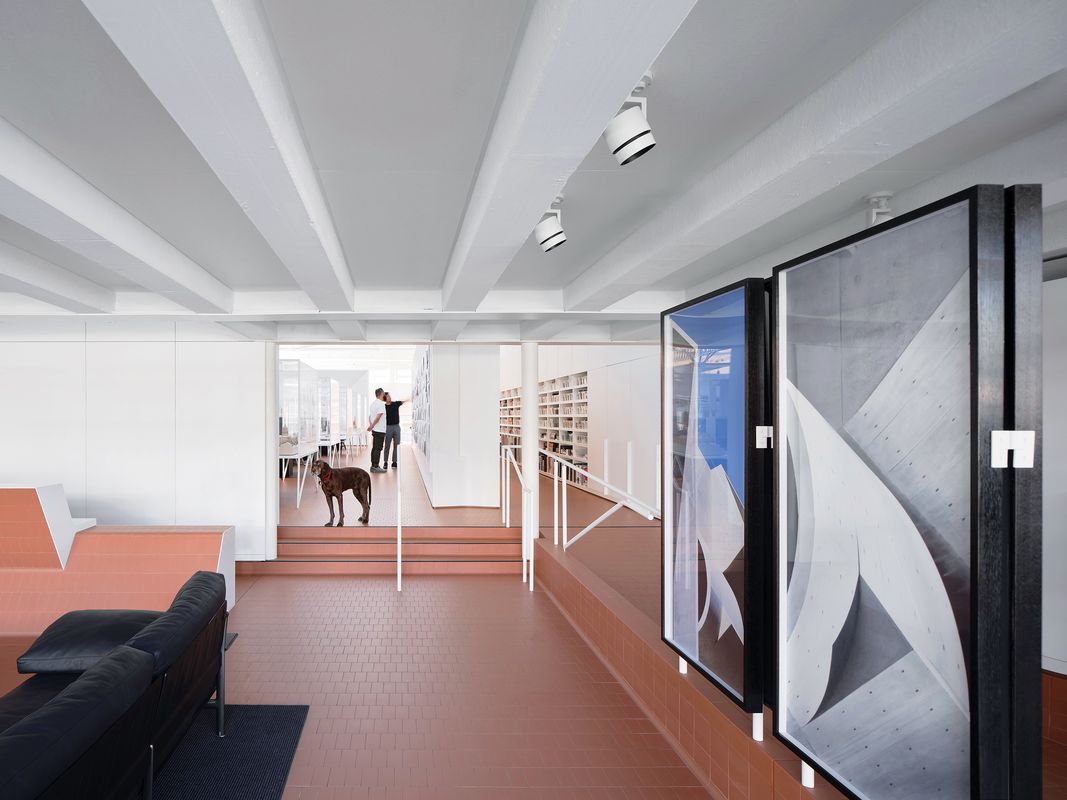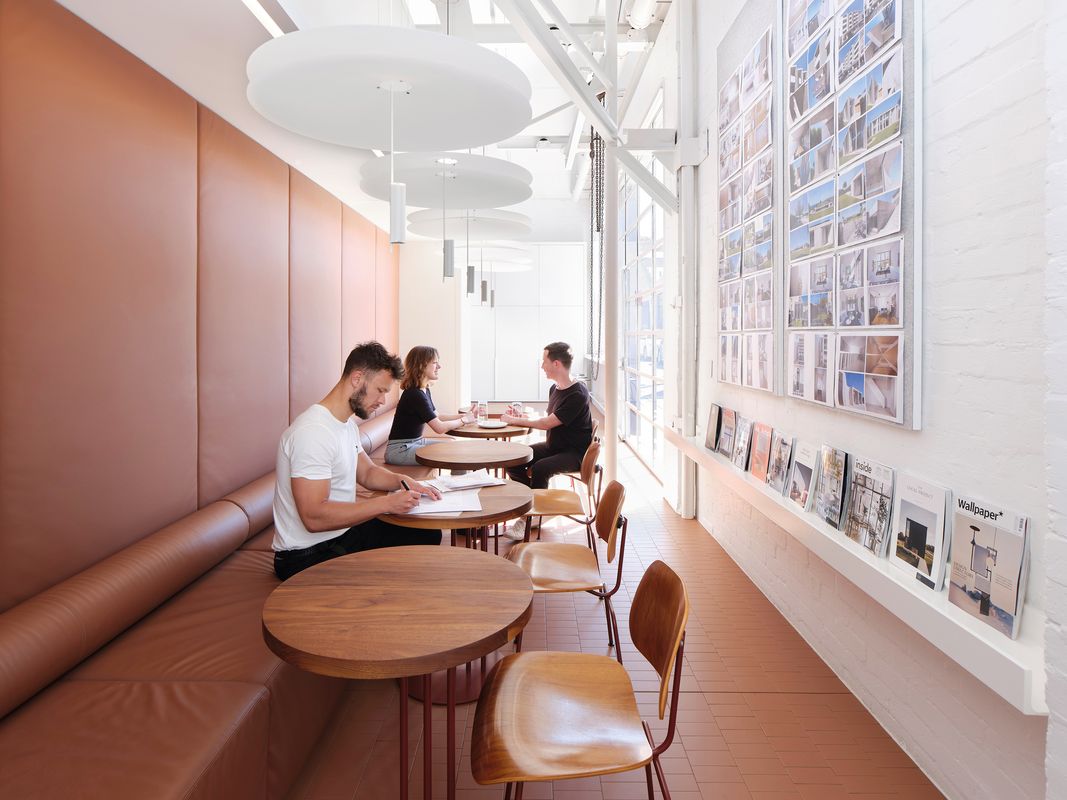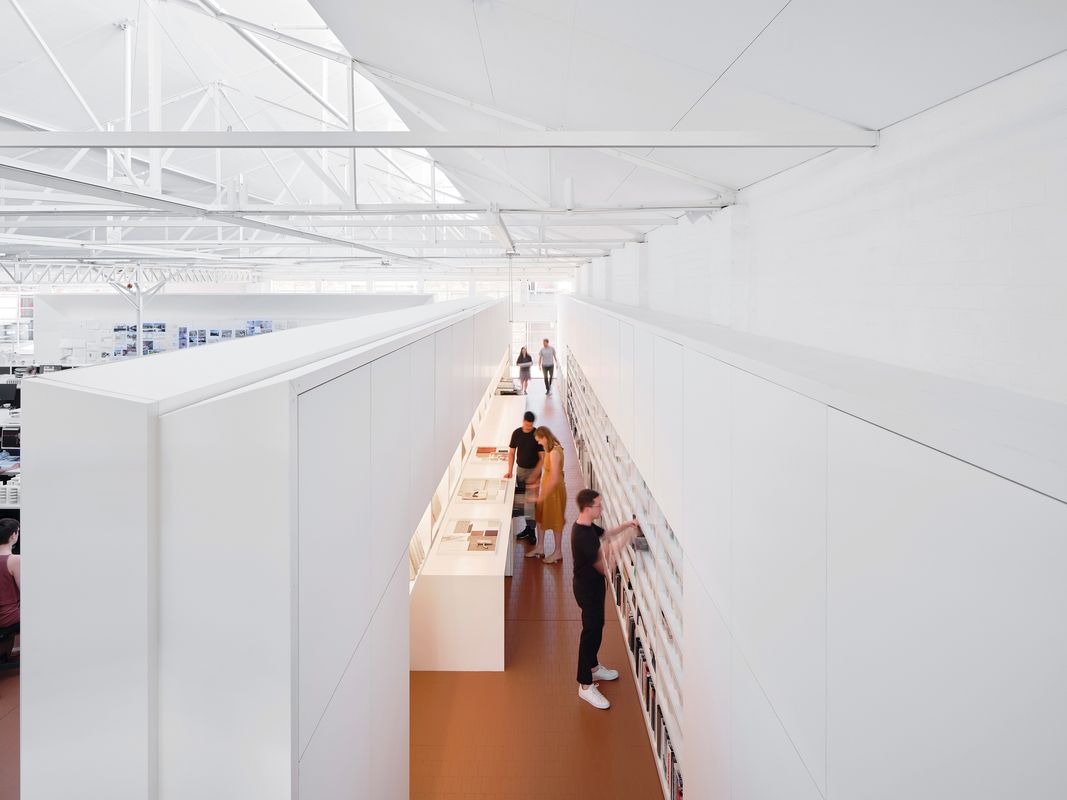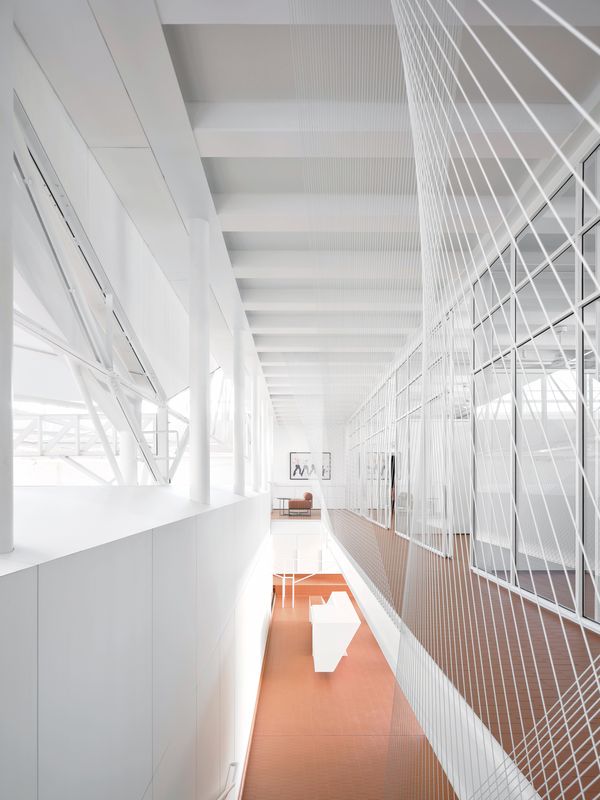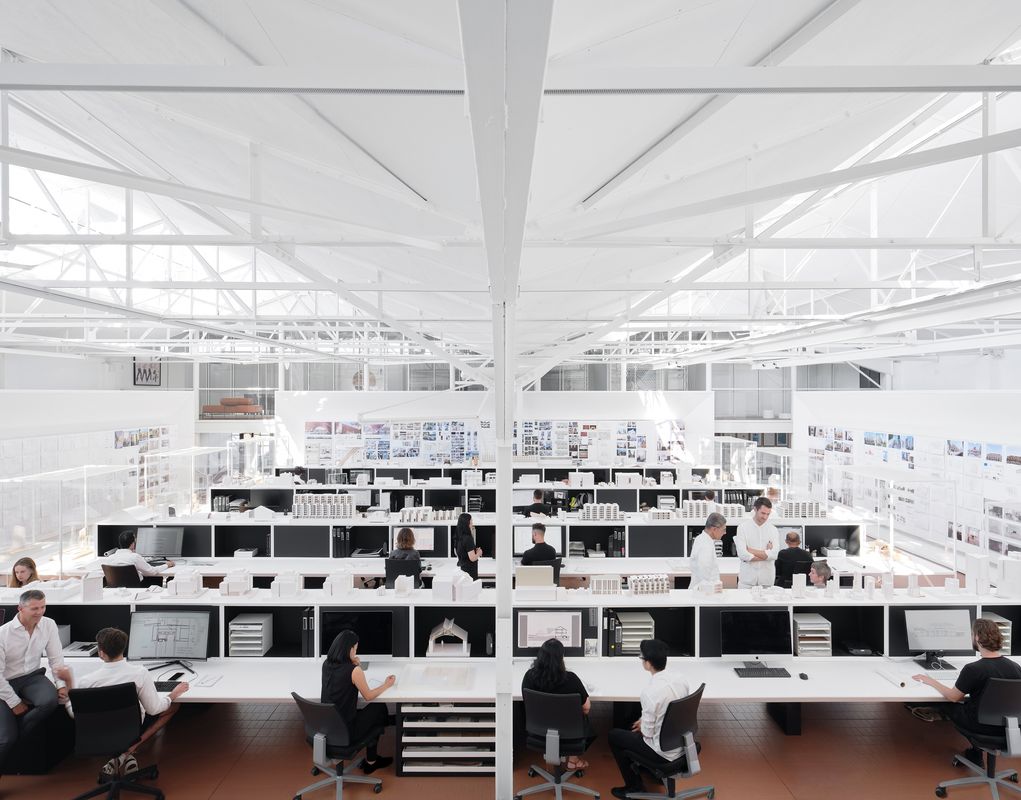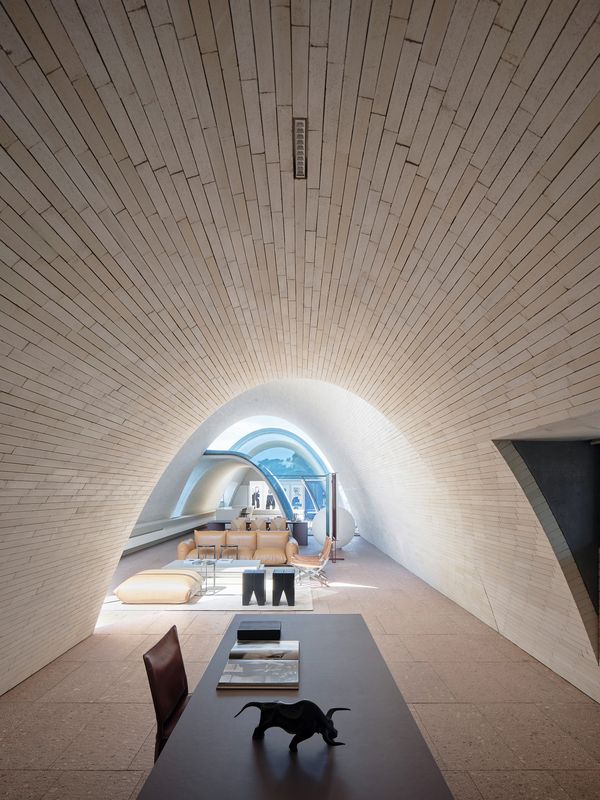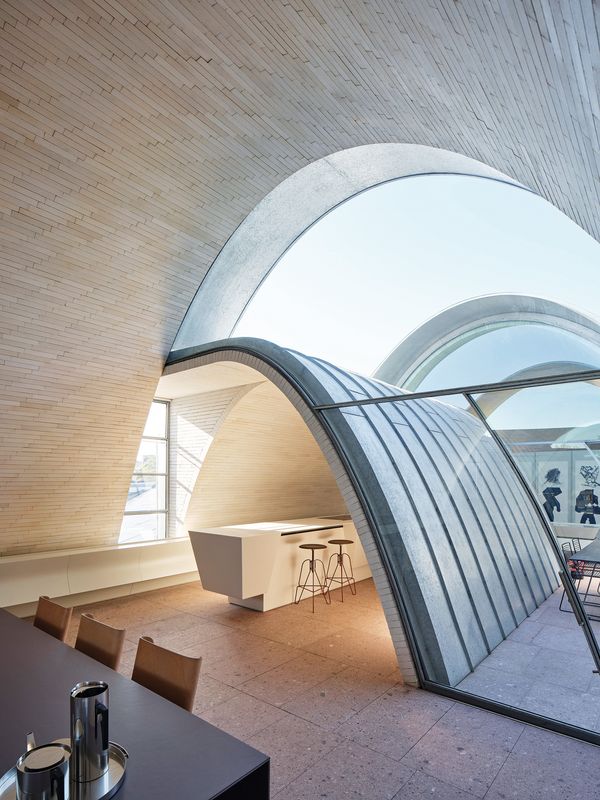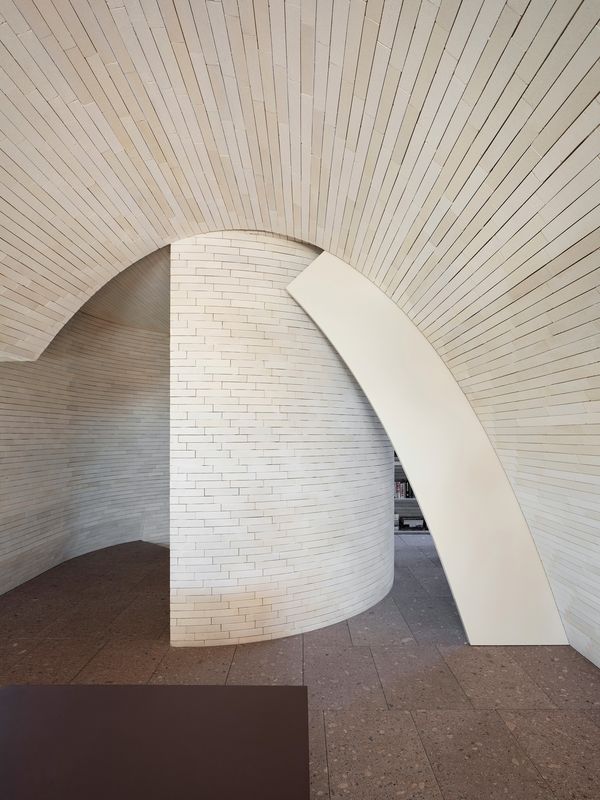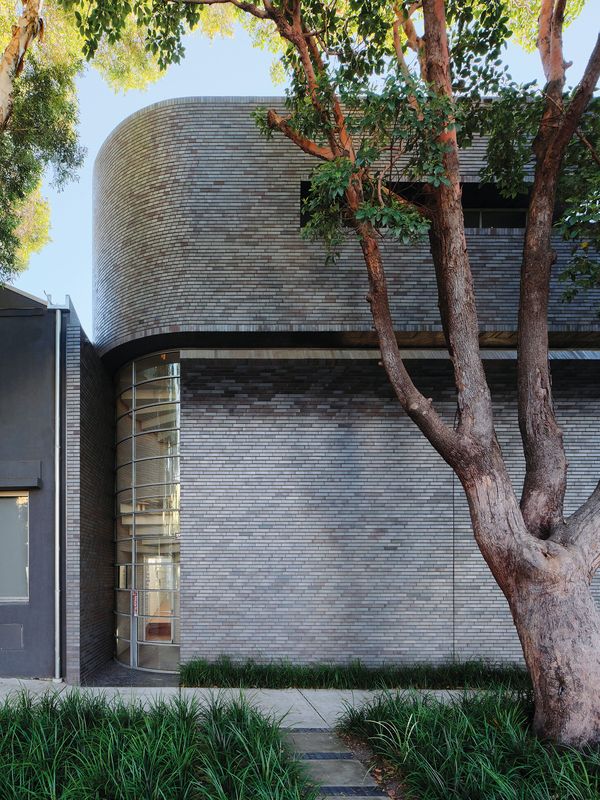Take a long chain by each end and hold it up in front of you. Gravity will pull it – naturally – into a catenary curve. Invert that curve and you have a catenary arch. Arches with this most efficient self-supporting geometry have been an architectural staple through the ages, used in vernacular, Medieval, Gothic and Renaissance architecture, and most notably and comprehensively in early modern times by Antoni Gaudi, particularly at his famous Sagrada Familia in Barcelona. Though they are not common in western domestic architecture, catenary arches have been used by architect William Smart to stunning effect in his home above the Smart Design Office in Sydney’s Waterloo.
Smart has lived above his office before. Prior to this, it was in a former boarding house transformed into a four-storey home/office building on a corner in Surry Hills. This new project took three years to complete. Situated at the end of a side street off a main road, the foundation was a solidly built early-twentieth-century brick factory with a sawtooth roof, like many in this industrial but increasingly mixed-use area.
Light falls through the glass clerestory windows into a white workspace that is framed by four long freestanding joinery blocks.
Image: Romello Pereira
Housing a staff of 40, the studio is all white with inexpensive, terracotta-coloured ceramic tiles on the floor throughout. It looks like architects’ studios have looked for perhaps a century or more, despite the displacement of drawing boards with screens. The windows in the sawtooth roof face south and flood the interior with natural light. The windows and blinds are automated to open and close with the weather and internal temperature. There is no air-conditioning. The floor is cooled or heated with underfloor water pipes and, on a muggy Sydney day, the interior is pleasant and benign. Sustainable architecture is a strong focus in Smart’s practice and this building has, among other features, 260 solar panels on the roof and water recycling equipment installed. It is entirely energy self-sufficient.
Architects and designers sit along five rows of desks in a central space. Surrounding them on four sides are deep partitioning walls. The internal faces are lined with drawings, sketches and works-in-progress, constantly pinned up for review, contemplation and reg- ular group discussion. Architectural models are stationed at each end of the rows, with the more important schemes from the firm’s history in large perspex boxes. Others – more sketchy – are scattered on tops of shelves between the desks.
The inexpensive, terracotta tiles on the floor of the reception stretch out into the main office space.
Image: Romello Pereira
On the other side of these deep partitioning storage walls, running anticlockwise from the street-side, are the entry foyer with bathroom and change-room facilities; a long and comprehensive materials library; a kitchen and canteen; and a model-making area. Above the entry foyer on a mezzanine floor are three smaller meeting rooms and one boardroom-scale room, each equipped with plenty of data input and large flat screens. Glazing is at floor level, looking down to a street garden that Smart cultivates in a neighbourly gesture (he did the same at his previous home/office), or at ceiling level, looking up into trees. The industrial streetscape is largely out of view. Beside the kitchen and canteen is a back door that opens to a laneway where the building’s original roofline is largely unchanged.
The main entry facade, on the opposite side of the block to the laneway, retains the materiality of the area – with long, narrow bricks and steel-framed windows – but was entirely rebuilt with the peeling curves and cantilevered forms that have some of the sculptural character of the facade of Smart’s now-famous Indigo Slam project. It’s a clue to what awaits on the roof. If downstairs is the more prosaic part of the building’s program, upstairs is all poetics.
For 70-year-old bricklayer Gareth, the detailed brick facade was an opportunity to show off his skill and perfection.
Image: Romello Pereira
Upstairs is home for Smart, his partner John and their 10-year-old German shorthaired pointer Dougal (who shadows Smart around the office and was a regular visitor during the construction of Indigo Slam). Access to this level is by a spiral staircase with 33 treads (built-in exercise) with its own entry from the street via a curved wall of glass at one corner; there is also a modest entry from the office. The spiral stairs deliver you from a curve in plan to a curve in section – up into the underside of a long sequence of catenary vaults that extend the full length of the roof. It’s breathtaking .
Two large vaults span the width of the upper level. Beneath these are the main living spaces – a lounging and dining area under one and, at the far end, the master bedroom and ensuite under the other. Two vaults at a smaller scale create a more intimate entry and study space, and a kitchen area. These are offset, one to one side of the plan and one to the other, to allow staggered outdoor spaces. Only at the kitchen does the curve of the roof flatten out for a window. The planes between the vaults are glazed, with bottom rolling doors opening to the terraces. Oblique district views to the sky open up the space, and the play of light and shadow along the lengths of light-coloured brickwork is beautiful.
Over the workspace, a narrow apartment runs the building’s length, made from four self-supporting brick catenary vaults.
Image: Romello Pereira
Behind the entry is a guestroom and library (with bathroom opening to a terrace) that can be partially screened with a sliding panel; but the space is effectively entirely open-plan, relying on the length of the building and spatial manipulation for discrete zones of privacy.
Immediately apparent is the thinness of the roof forms. The underside of the curves is a structure of self-supporting, long, thin bricks laid over formwork, just as brickwork arches have been constructed for thousands of years. There is no mortar. The exterior of the bricks is sprayed with a layer of concrete to bind it together and help with structural solidity. A layer of insulation, plywood and then galvanized roofing is applied over the top. Interior and exterior are part of the same structure. There is a sense of living under the most minimal protection – like a layer of skin.
Smart worked with the UTS Tech Lab to explore and develop the making of the brick arches and a full-scale model was built to test the process. This attitude of collaboration and prototype development with centres of learning has become an important part of Smart Design Studio’s practice.
At the kitchen, the curve of the roof flattens out for a window, providing oblique views to the sky.
Image: Romello Pereira
It’s fair to say, I think, that William Smart’s architecture has become more expressive and adventurous in recent years. His last home, above the office in Surry Hills, was more conventional, architecturally: well planned, well detailed, but orthogonal and straightforward.
In a sense, Smart was unleashed by Indigo Slam. That project seemed suddenly different to what had gone before. In philanthropist Judith Neilson he had a client who allowed him full expression. The project garnered global attention and, since then, Smart has been in full flight. Cues from sculptors Smart admires – Eduardo Chillida, Paul Selwood and Richard Serra – are visible in that project and in others, such as his proposal for a gateway building at South Dowling 479 and Crown 515 (both in Surry Hills), Hall 10 in Bondi Beach and the Rail Operations Centre in Green Square.
Smart says that his more expressive self was always there. It was evident in his student days but suppressed by years working in Sir Norman Foster’s office where, despite the excellent training, there was a particular way of doing things and not much was allowed outside the firm’s aesthetic rules. It’s taken Smart time to emerge from under that weight. No doubt what we’re seeing now is an architect hitting their stride – a confluence of the right clients, the right timing, and an increasing assurance of their own particular architectural direction.
Credits
- Project
- Stokes 14
- Architect
- Smart Design Studio
Sydney, NSW, Australia
- Project Team
- William Smart, Jo Ann Kok, Rosie Ives, Andy Ostojic, SDS Interiors, Josephine Cabezas, Goldie Peligrino
- Consultants
-
Acoustic engineer
ADP Consulting
Arborist Jacksons Nature Works
BCA consultant Building Certificates Australia
Basix consultant Graham Hunt
Contamination consultant Getex
Contractor AJ Bristow & Sons
Ecological consultant The Carbon Reduction Institute
Electrical engineer Umow Lai
Heritage consultant City Plan Services
Hydraulic engineer Sparks and Partners
Landscape architects Fieldwork Associates
Lighting consultant Steensen Varming
Mechanical engineer Froster Engineering
Planning consultant Urbis
Principal certifying authority BCA Australia
Quantity surveyor QS Plus
Specialist vault development UTS
Structural engineer Northrop Consulting Engineers
Surveyor Geometra Consulting
Traffic consultant Inco Traffic Management
- Aboriginal Nation
- Built on the land of the Gadigal people of the Eora nation
- Site Details
-
Location
Sydney,
NSW,
Australia
Site type Urban
- Project Details
-
Status
Built
Completion date 2020
Category Commercial
Type Workplace
Source
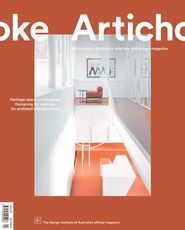
Project
Published online: 17 Nov 2021
Words:
David Clark
Images:
Romello Pereira
Issue
Artichoke, June 2021

